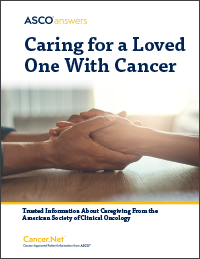Ranak Trivedi, PhD, is an assistant professor in the Department of Psychiatry and Behavioral Sciences at Stanford University and an investigator at the Center for Innovation to Implementation at the VA Palo Alto Health Care System. She received her PhD in clinical psychology with health psychology concentration from Duke University. Dr. Trivedi envisions health care systems that provide family-centered, culturally appropriate care to those with serious and chronic illnesses. You can follow her on Twitter.
The topic of long-distance caregiving is personal. I have supported my mother’s journey through metastatic breast cancer for over 18 years, while also supporting my father who has multiple health issues. The closest I have been to my parents is 150 miles; the farthest, over 2,000 miles. I am hardly alone, since even before the COVID-19 pandemic, it was estimated that nearly 6 million caregivers in the United States provide long-distance care.
The definitions of what constitutes a long-distance caregiver are not well established, but it is generally accepted that the caregiver has to live at least 1 hour away to be considered “long-distance.” About one-third of long-distance caregivers live 450 miles away or more, which is well beyond the distance many people want to cover for a weekend trip. Perhaps this is why long-distance caregivers shoulder greater out-of-pocket costs than those who live closer to the person they’re caring for. These costs may come in the form of airfare or gas, as well as providing financial support to assist the person they’re caring for or a primary caregiver who lives near the person with cancer.
The challenges of long-distance caregiving
Long-distance caregivers are often secondary caregivers and play a more supporting role to the primary caregivers who either live near the care recipient or even with them. Because of this, long-distance caregivers face unique challenges when providing support. First and foremost, since long-distance caregivers are not physically present, they are often unable to attend medical appointments or directly receive information regarding their loved one’s diagnosis, prognosis, and treatment. However, this is likely going to shift due to the rapid growth and acceptance of virtual visits (telemedicine) since the COVID-19 pandemic began. As more providers and health care systems become comfortable with telephone or video visits, it may become easier to invite long-distance caregivers to clinic appointments. On the flip side, however, it has become more difficult for caregivers to attend in-person appointments when needed, such as radiation therapy appointments or cancer medication infusions.
Long-distance caregivers may also experience feelings of guilt for not being “more useful.” I can personally attest to this, despite my family being supportive of my long-distance role. This guilt may be either internal or created by the person you’re caring for, the primary caregiver, or others in your social network. The advice or suggestions of long-distance caregivers may also not be well received by others who are nearby and providing in-person care, which can lead to frustration and stress for all involved.
How long-distance caregivers can offer support
-
Regular communication is a powerful way to offer emotional support. There are many things that long-distance caregivers can do to support the person they’re caring for as well as the local caregivers. And, providing emotional support through regular communication, such as telephone calls and video chats, is important. It is easy for long-distance caregivers to think, “What does it matter if I call today or not? I’m not there to help with [some task].” Instead, know that every little thing helps. This is especially important as cancer treatments can be prolonged, and the initial outpouring of assistance from your loved one’s wider social network can shrink over time.
-
Coordinate support from the patient’s social network. During times of more urgent need, long-distance caregivers can coordinate with their loved one’s broader social network to arrange specific needs, such as providing meals to both the person needing the care and any local caregivers. This social network includes anyone in your loved one’s community who may want to offer support, including friends, neighbors, members of a faith community, and others. You can also help with finding people to provide childcare or to drive the person with cancer to and from appointments.
-
Help with finding long-term or temporary in-home help. It’s necessary for local caregivers to get a break from caregiving once in a while to maintain their own overall well-being. Because of this, long distance caregivers can help by finding and hiring home care services to help the local caregiver with their responsibilities and step in when a break is needed.
-
Share updates about the person’s care. People will want to know about the progress of the person’s cancer treatment. The long-distance caregiver can be the main person who sends updates about the progress of their loved one.
-
Become the “expert” on medical information. As a long-distance caregiver, you can provide the crucial service of coordinating medical information and researching treatments that may be available. The care recipient may also rely on long-distance caregivers to help guide their decisions and even translate when there are language barriers.
Remember that technology is a benefit for long-distance caregiving. Many great mobile apps and websites can help long-distance caregivers participate in the support of their loved ones.
Caregiving during a pandemic
Like everything else, COVID-19 has complicated caregiving. Caregivers may not be allowed to accompany their loved ones to appointments, and there are complicated rules around visiting patients. This can feel even more challenging when supporting a loved one who has a weakened immune system, as people with cancer so often are. Local caregivers may hesitate to visit their loved one (unless they live with them) to not expose them to infection. Caregivers who live with the care recipient may hesitate to venture out for the same reason. In that sense, COVID-19 has made many more people into long-distance caregivers.
Caregivers need to remember to take care of themselves. All the self-care strategies of caregiving apply to long-distance caregivers, too. Take care of yourself the best you can, and try to quiet the guilt you feel for being away. If your distress seems too high to manage, seek professional help.
Long-distance caregiving is, after all, caregiving.
 The free ASCO Answers Guide to Caring for a Loved One With Cancer includes practical tips, advice for communicating with family and the health care team, and worksheets to help track medications and coordinate caregiving tasks. Download this guide as a printable PDF in English (44 pages) or in Spanish (40 pages). Printed copies can be purchased in bulk from the ASCO Store.
The free ASCO Answers Guide to Caring for a Loved One With Cancer includes practical tips, advice for communicating with family and the health care team, and worksheets to help track medications and coordinate caregiving tasks. Download this guide as a printable PDF in English (44 pages) or in Spanish (40 pages). Printed copies can be purchased in bulk from the ASCO Store.







